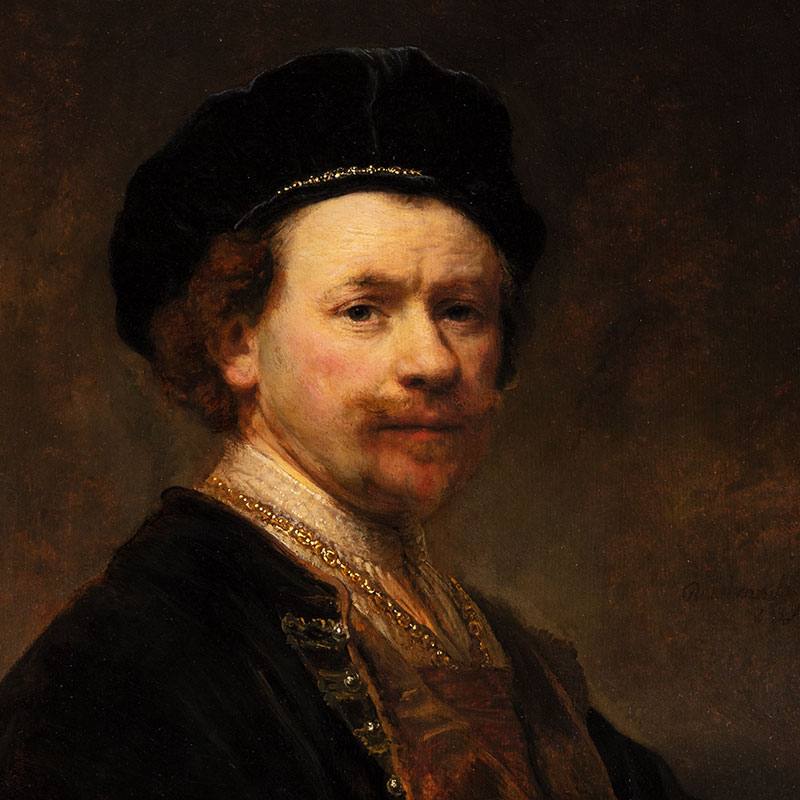The J. Paul Getty Museum
Rembrandt Laughing
Rembrandt practiced his art with great vigor as in the late 1620s, exploring the representation of emotion through expression and movement. His pursuits in etching, notably self-portraits looking in the mirror, and painting were closely aligned in these years. Rembrandt Laughing is one of a small number of paintings executed on a copper plate, similar to those used for his narrative etchings. Here, he portrayed himself in the guise of a soldier, as a personal tronie (character study). He stands confidently before a plaster wall, bare-headed and long-haired, wearing a polished steel gorget around his neck (a studio prop also found in no. 4), right arm bent akimbo, and brown cloak wrapped over his left shoulder. Dynamic, unblended brushstrokes in the face convey spontaneity, capturing a fleeting moment when, head tilted and teeth flashing, he catches our eye and engages us in his mirth.
Rembrandt Laughing, about 1628. Oil on copper, 8 ¾ in. x 6 ¾ in. (22.2 x 17.1 cm). The J. Paul Getty Museum, Los Angeles, 2013.60













